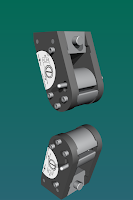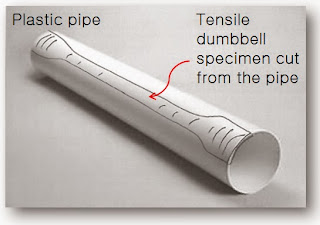S0453 - Tinius Olsen - 100kn Seat Belt Grip

These grips are used to test seat belts and webbing up to 100mm thick.
seat belts have interesting properties, they have to cushion the shock of a crash without injuring the passenger of the car at low speed stops. In a collision it has a precise elastic limit, meaning that it stretching slightly to diffuse the shock, goes beyond its elastic limit, becomes plastic then holding it's passenger without breaking, there is a great deal of force involved in this process (which is why these grips are rated to 100kN...)
The testing can be quite explosive as the belt stores a great deal of energy before failing.
By exerting a tensile force on the belt it is possible to see how it will behave.
One of the important features of this grip is that it is self tightening. The specimen is feed through the grips in a specific manner as not to damage the belt.
A damaged belt can dramatically affect its ability to protect the passenger, and once it has been stretched to it's elastic limit and has become plastic, it doesn't have the same level of protection.
This is why seat belts should be replaced after an accident.



Comments
I have a tensile test to do on PolyPropylene Strapping. It is about 12 mm wide x 0,63mm thick. It is very strong 270 kgf for a width of 12 mm and 0,63mm thick.
The surface is very slick, I have tried Hydraulic grips and they do not work doe to grip breaks; capstan type grips slip and I am out of suggestions. What does Tinius Olsen make to grip such a sample?
I need to gather Elongation Data (% Total Elongation), during the test and I am using the crosshead motion as my extensometer. Slippage is not tolerated for the data I have to publish.
Thanks